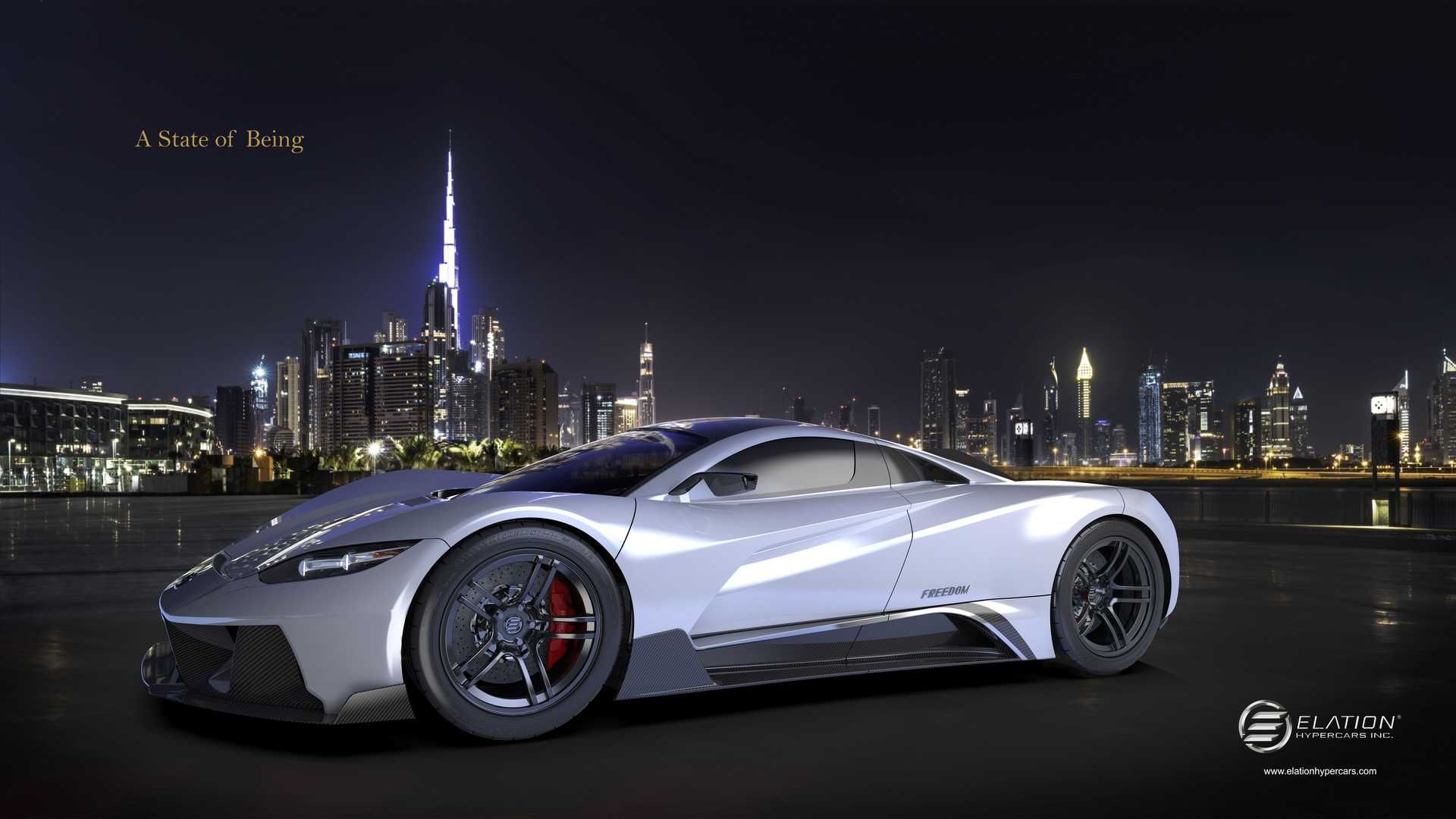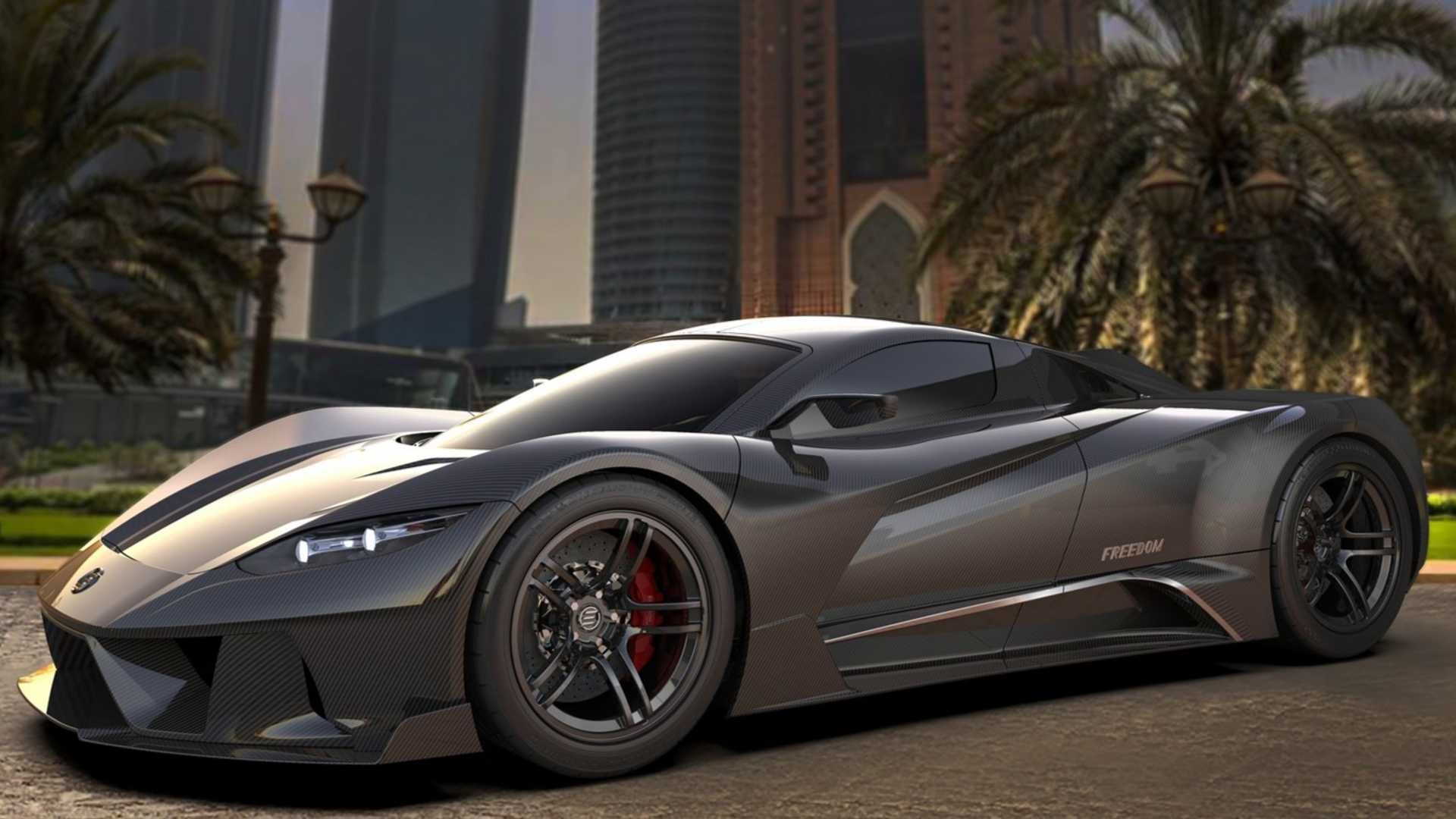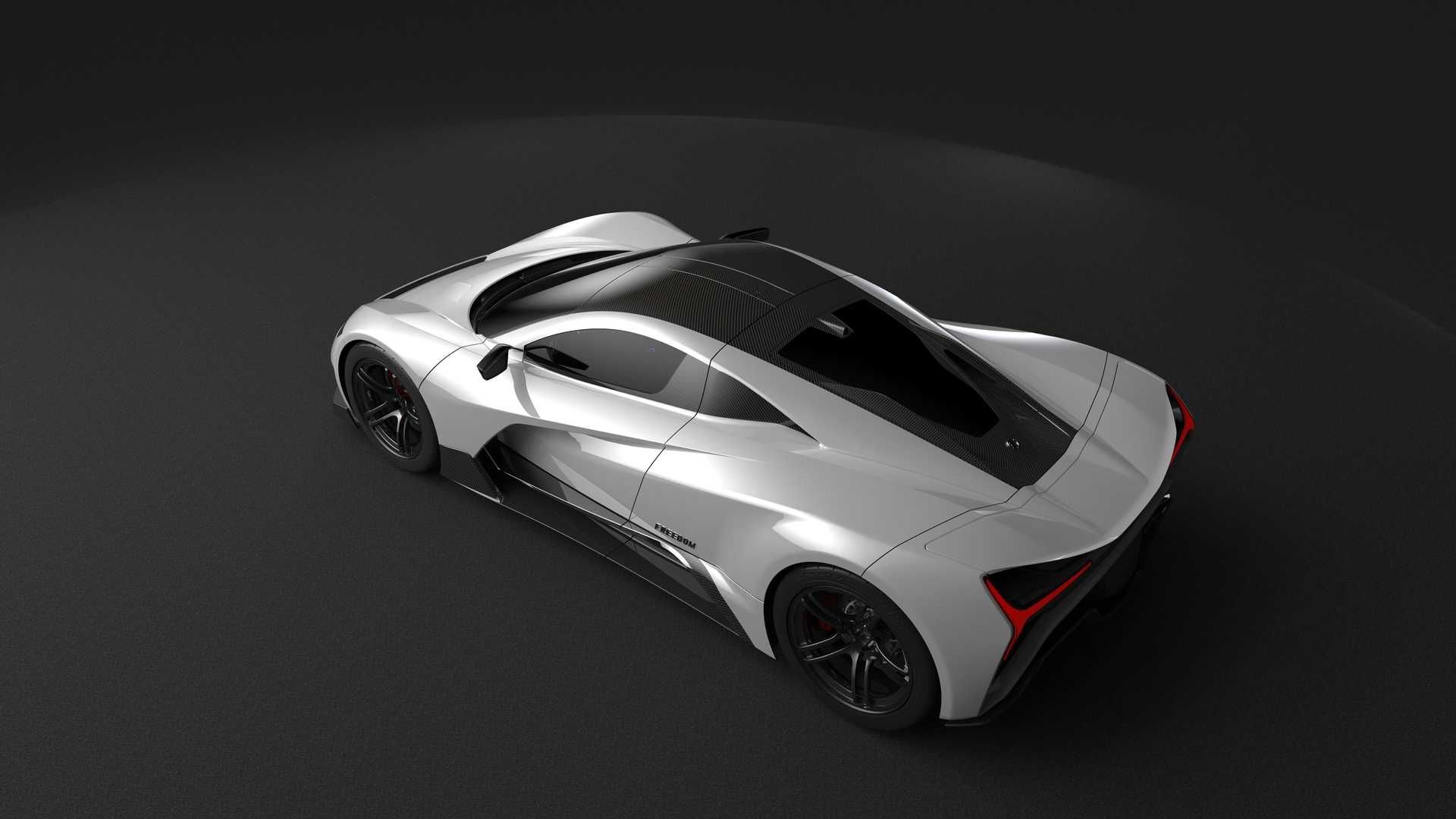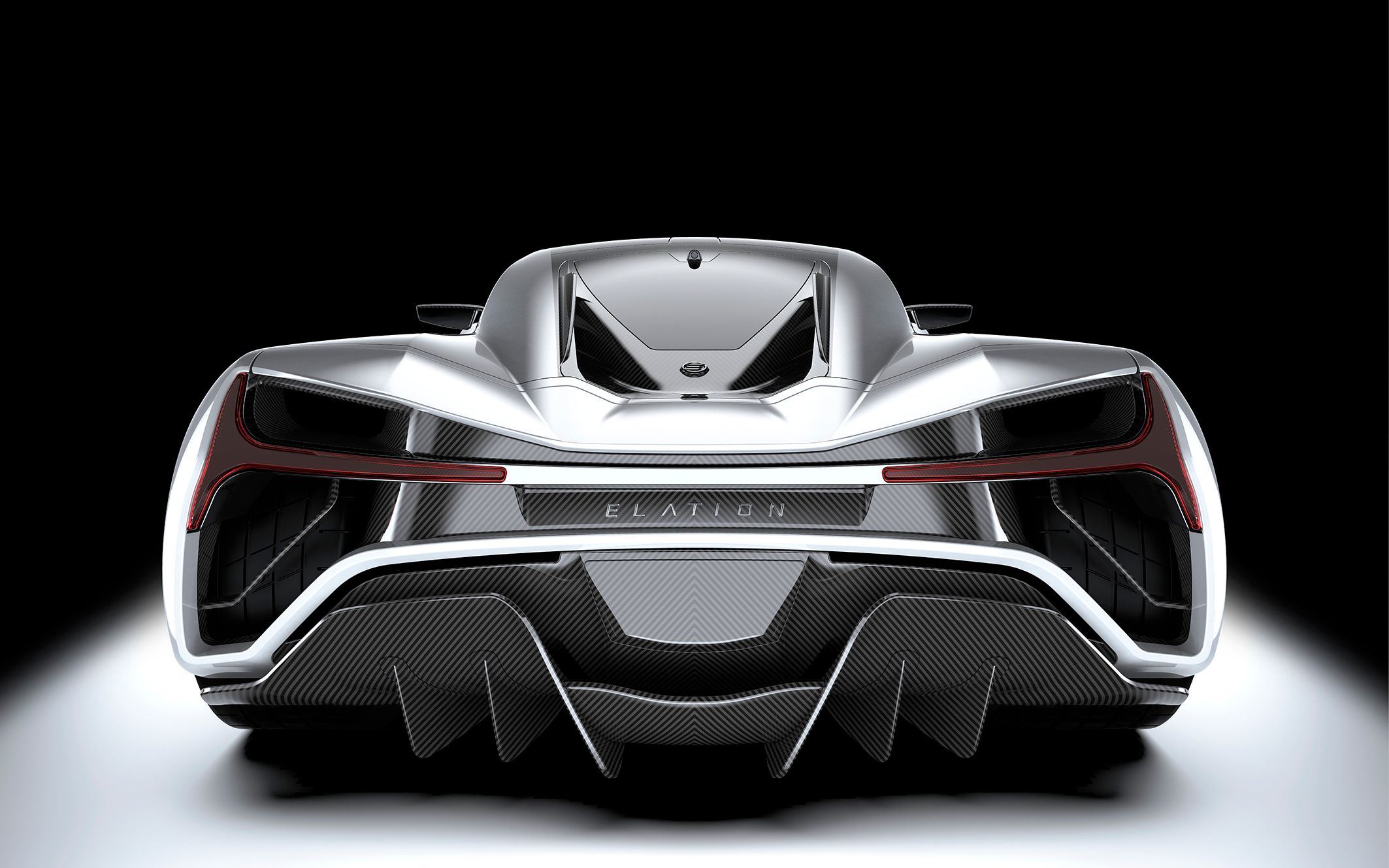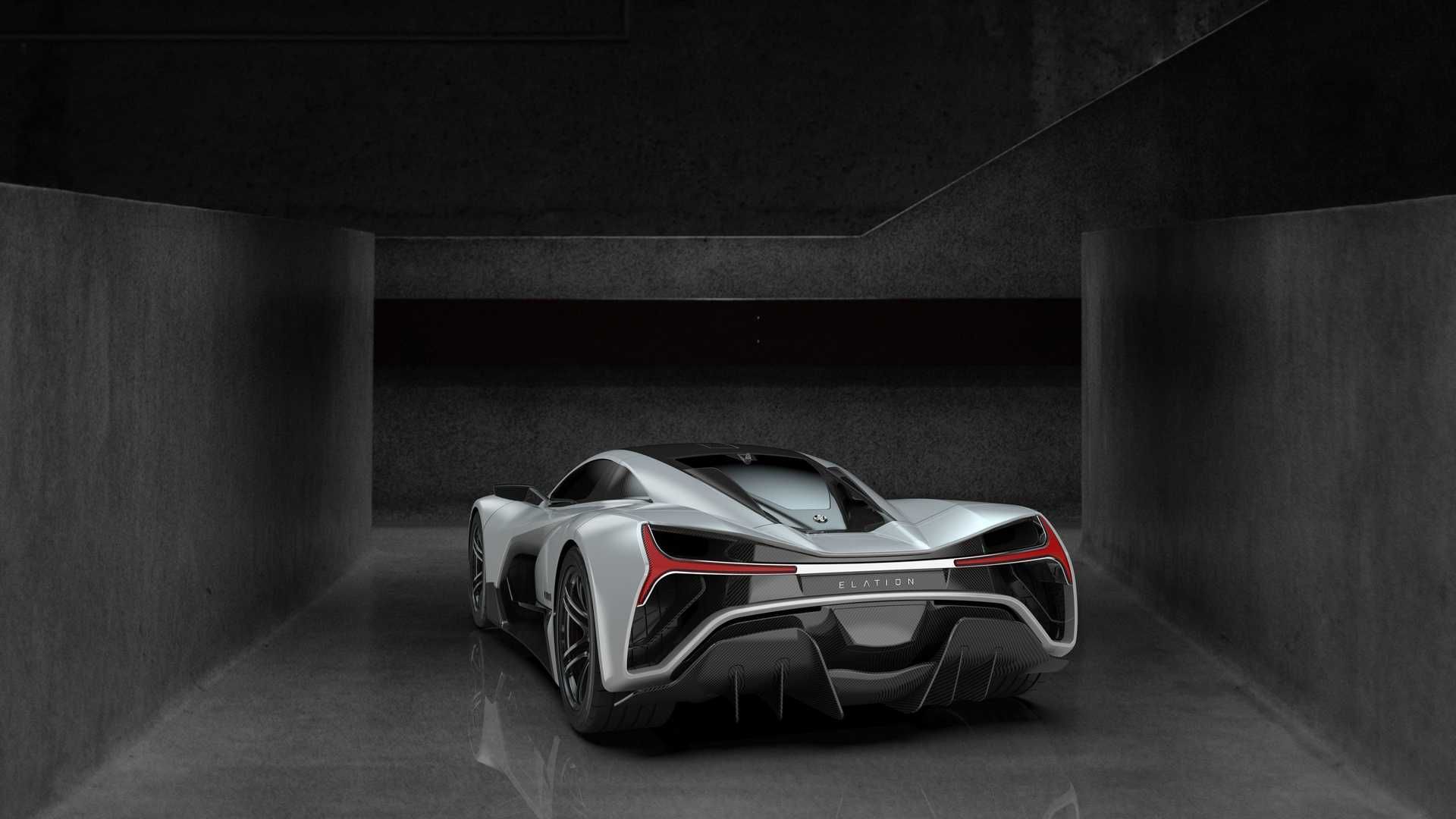Last November, Elation Hypercars unveiled the Freedom, a 1,900-horsepower electric car priced at $2 million. It also promised 400 miles of range, which for a car of this ilk, is not too shabby. Then it all went silent.
Three months later, we are glad to report that the Freedom project is not dead. In fact, Carscoops reports that it is inching closer to production as Elation secured a partnership with Cascadia Motion.
In case the name does not ring a bell, Cascadia Motion is an electric mobility company created by BorgWarner that specializes in electric and hybrid propulsion systems. It is the former that interests Elation, as it will work together with Cascadia to develop the Freedom’s electric powertrain.
Speaking of which, back in November 2020, Elation trumpeted a 100-kWh Li-ion battery powering four electric motors. Total power output was said to be in the region of 1,900 horsepower. In addition, customers could opt for a larger battery pack (120 kWh) which would allow the hypercar to travel for about 400 miles on a single full charge. Performance-wise, the Freedom would be good for a 0-62 mph (100 kph) sprint ticked in 1.8 seconds and a top speed of 260 mph (418 kph).
Elation Freedom - Electric specifications
|
Powertrain |
four electric motors |
|---|---|
|
Battery |
120-kWh Li-ion |
|
Horsepower |
1,900 HP |
|
Range |
400 miles |
|
0 to 62 mph |
1.8 seconds |
|
Top Speed |
260 mph |
As a quick mention, the Freedom’s other powertrain would be a 5.2-liter V-10 mated to a seven-speed S-tronic gearbox and AWD, which has Audi R8 V10 written all over it.
Other than the electric heart, Elation’s Freedom is supposed to sit on a carbon fiber monocoque chassis married to a Formula 1-inspired double-wishbone suspension. The chassis itself has a claimed torsional rigidity of 65,000 Newton-meters (roughly 47,900 pound-feet) per degree, some 15,000 Newton-meters (11,600 pound-feet) per degree greater than the Bugatti Chiron’s.
Elsewhere, Elation still will not tell us when the Freedom launches. However, given that the company has just recently secured the deal with Cascadia Motion, late 2022 would be a fair guess, given that developing a high-performance powertrain is an elaborate task that might not require many bits and bobs.
However, it demands a lot of software writing and testing to make sure the hardware and the coding work in perfect symbiosis, among other vital aspects such as aerodynamics, for example.

